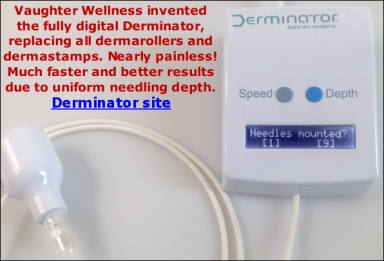The problem is that vit. C penetrates the skin at pH levels less than 3.5. The pH of vit. C in a water solution is very low so the penetration into the deeper skin levels is high.
A 5% solution in water has a pH of 2.2 to 2.5:
https://http://www.inchem.org/documents/pims/pharm/ascorbic.htmpH in water: pH 2.4 - 2.8 (2% aqueous):
https://http://www.inchem.org/documents/sids/sids/50817.html The studies that use the vit.C + E combo (+ in some cases ferulic acid) used solvents and buffers:
“L-ascorbic acid, DL-tocopherol, and trans ferulic acid were purchased from Sigma (St Louis, Missouri). Aqueous solutions were prepared in a vehicle containing diethylene glycol monoethyl ether, 1,2-propanediol, Brij-35, and phenoxyethanol at pH 3.”
https://http://www.nature.com/jid/journal/v125/n4/full/5603565a.html If you simply mix vit. C and vit. E, the absorption of vit. C might be very much reduced without mixing it with additional solvents and buffers.
If you want to ensure the best penetration, apply vit. C first, wait for it to be absorbed and then apply vit. E. Thus you will get a high penetration and the C + E combo will potentiate the prevention of UV damage. If you want to further enhance vit. C penetration, apply it after rolling with a dermaroller for product penetration (if your skin can handle the stinging) or apply it without dermarolling but occlude it with plastic foil for 15 minutes. Regular application every other or third day is sufficient. The half-life of vit. C in the skin is about four days. (The amount of vit. C present in the skin will halve every four days.)
Don't do it the other way round (first E then C). Water cannot penetrate an oil barrier and vit. C is not fat soluble.
The main reason for mixing vit. C with other antioxidants was to enhance its stability in commercial products that have to be stable even after many months since the route from the production to the actual purchase can take a long time, and it has to stay stable after the purchase as well.
The advantage of a homemade vit. C serum kept in a dark, airtight container in the fridge is that it penetrates the skin without any additional chemicals and it keeps stable for a relatively long time.
Some vit. C + E serums use fat soluble forms of vit. C. In a study concerning topical vit. C skin penetration, only the ascorbic acid form increased the levels of ascorbic acid in the skin. The other forms didn’t:
“Derivatives of ascorbic acid including magnesium ascorbyl phosphate, ascorbyl-6-palmitate, and dehydroascorbic acid did not increase skin levels of L-ascorbic acid.”
https://http://www.ncbi.nlm.nih.gov/pubmed/11207686 It doesn’t prove that it had no effect on collagen production since this was not studied but further studies are necessary to find out.





